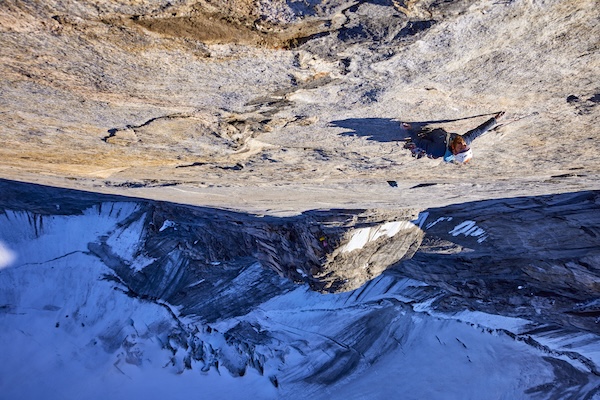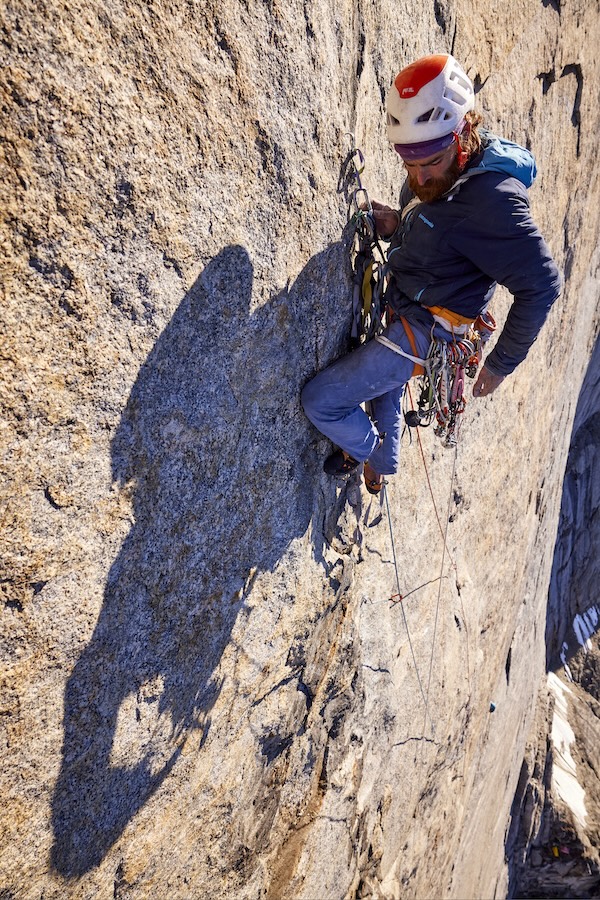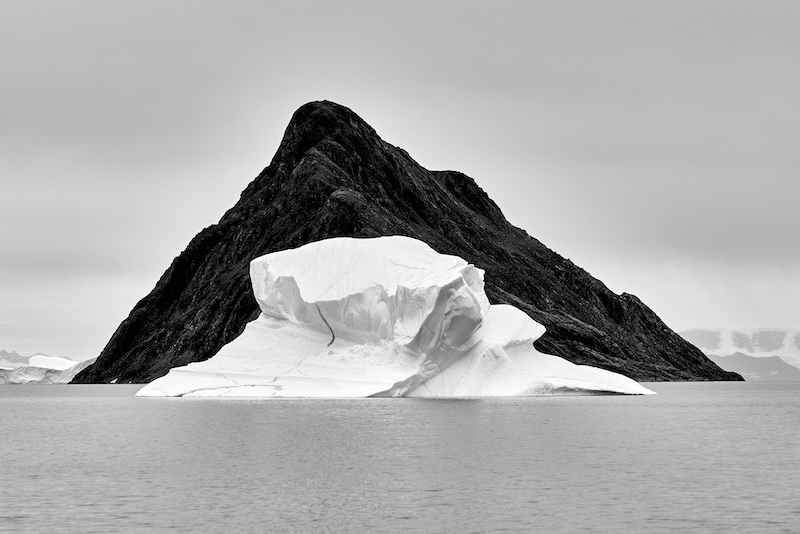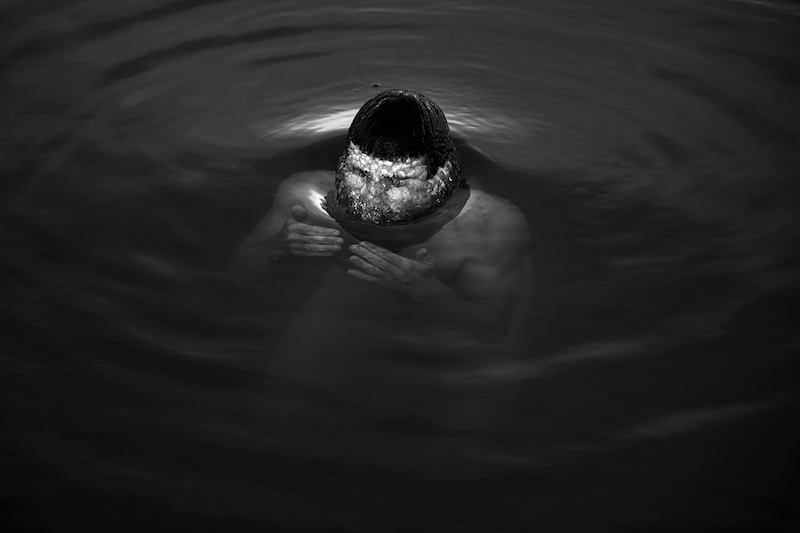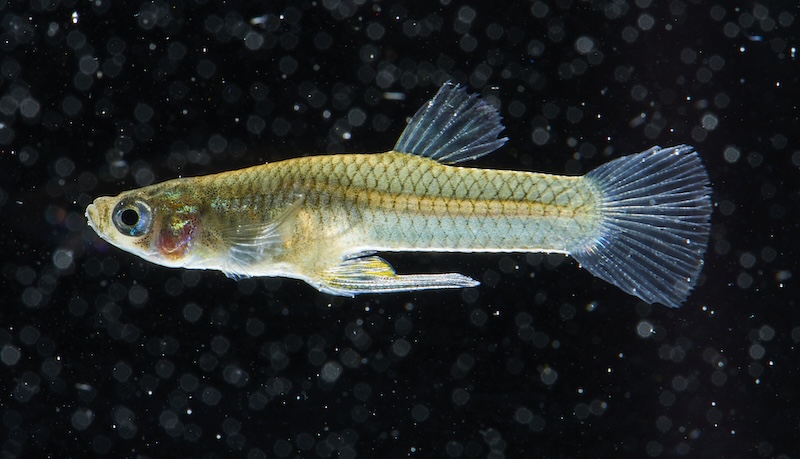Patagonia Spring Journal
Photographer: Ben Ditto
Read the story here
I caught up with Ben Ditto after Patagonia featured his work in the Spring 24 Journal, he was currently in the center of Nevada at a little cliff he’d been climbing on for a few years – and was kind enough to share a few thoughts- the best office is a mobile one.
You have a category on your site called, The Wild Bunch, which looks like a good time. Who are these fellows and how did this trusted merry band come to life?
Ben: Myself, Nico Favresse, his brother Olivier, and Sean Villanueva O’Driscoll were dubbed by Captain Bob Shepton before our 2010 Greenland big wall and sailing adventure for which we won the Piolets d’Or. Bob must have seen some early videos from Nico and Sean such as the ‘Power of Jam‘ and ‘Free South Africa ‘in which there was a lot of music and light-hearted antics all while sending the gnar.
Previous to that trip we had been climbing together for years, initially meeting Sean while staying at Miguel’s Pizza at the Red River Gorge in the early 2000’s. Visitors can see an old newspaper clipping on the wall where I’m walking a slack-line, and Sean is in the background.

You recently were on a team that headed to Greenland, the objective was a 4,000 ft slab of granite: The Mirror Wall – how did that come about and what made you say yes to this ambitious trip?
Well, this was to be our third trip together sailing in Greenland and climbing big walls, so when the offer arose it was hard to say no to. Again, we have Bob Shepton to thank for instigating the 2023 trip to Greenland. Bob, in his 80s, has long since sold his sailboat, the Dodo’s Delight, but he’s not out of the adventure game yet. Turns out Bob had met a young British skipper named Mike Brooks who owns the steel sailboat, Cornelia. Mike is a keen adventurer and offered to take our group of climbers to the Arctic. After a few phone calls daring each other to go, we decided to try to climb the mirror wall.
I stay in touch with Nico and Sean and all their exploits but it’s been years since I’ve done an expedition with them. However, I wasn’t too surprised to get the call to join them as the photographer on the trip. It does take a special sort of appreciation for adventure, climbing, sailing, and hardship. It was tricky deciding whether or not to join this expedition, but ultimately my summer was free and I was psyched to go.
Since our other expeditions, my work and life have taken on a different form. For most of my 20’s and 30’s I was constantly on the move, now I’m usually staying closer to home. Part of me thinks that if I’d had other work during that same time, I might’ve missed out on all the good fun we had in Scoresby Sound.
Previous expeditions to Mirror Wall used helicopters for the approach, you guys green-pointed instead. This round-up isn’t for the faint of heart.
- 7 days of prepping the boat in Scotland
- 16 days of Sailing and 5 days waiting on a storm in the Faroe Islands, then another 14 days in Iceland waiting for the ice pack to clear.
- 10 days of strenuous hiking, and 9 days of challenging climbing
- How much pre-prep goes into a trip like this? (both physical and mental)
Ha ha yes, the stats are pretty dizzying, especially when you consider we went through all that to climb approximately 1/2 of a big wall FA. I lost track along the way but there must have been over 30 glacial river crossings to add to the list. We all stay in good climbing shape, covering all the bases of hiking and physical strength you need to do an expedition like this. But there’s a lot of it you can’t train for. The things that take a beating are your feet from the jagged glacial surface and your hips from wearing backpacks and harnesses. A non-climber would probably wonder why to bother going to these difficult-to-access places; let alone humanly powered. Packing three months of food and climbing equipment for seven people is no small task. We have Nico to thank for accomplishing that task. We usually share a few spreadsheets and take care of finances on TriCount.
Cornelia and the lads sailed from Scotland in June and picked me up along the North Coast of Iceland, before continuing North to Scorseby Sound. For our team, part of the experience is overcoming uncertainty and being in the moment that sailing provides. We never knew if the pack ice would provide passage until we pushed into it. Similarly, we didn’t know what the Mirror Wall would yield until we started climbing.
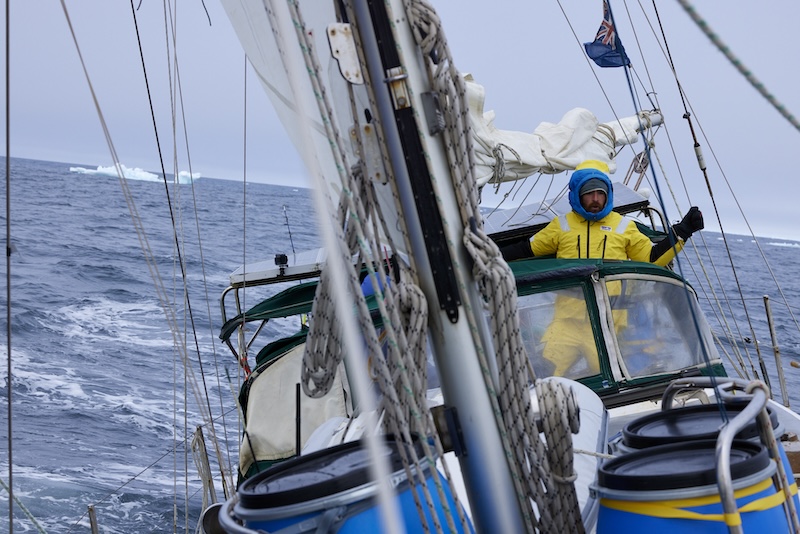

I’m forever impressed with the athletes who mastermind these missions – however, the photographers are equally as impressive. You’re on a dual track – athlete and creative, how hard is that to manage?
I think everyone’s career is balanced with everything else that’s happening. I’m not suggesting that being a climbing athlete is the same as being a parent, for example, but similarly, I have to juggle a few priorities.
I find myself operating in distinct modes. I’m either a photographer or a climber on any given day, but I rarely mix the two unless work requires it. You know, as photographers were constantly multitasking to solve problems and it’s nice to be able to simplify and just go climbing now and again.
What was it like to photograph the “featureless, shield of granite?” for the first time – what was running through your mind?
Approaching the wall I found it impossible to avert my gaze. It was like a puzzle to solve: where is the line we will climb? Where are the cracks in the mirror?!
As a climber, I have a deep sense of appreciation for climbing at the highest levels. Watching Sean pour everything into this line on the mirror wall was pretty much the greatest show on earth, and I was the only one who could see it. The photographs (and footage) are my way of sharing this performance with the world.
How much camera gear did you carry and was it hard to shoot in the frigid conditions, any gear failures, this area is known as the “Arctic El Cap”
On the boat, I took two camera bodies, two drones, a bunch of batteries, hard drives and cards. But for the actual load carrying and big wall ascent, I had to pair everything down to one camera 2 lenses, and one drone.
It pains me to say it, but I had a problem with my DJI drone while we were up on the wall. Due to our remote and un-connected location, I couldn’t log into my account and my drone would only fly a couple hundred feet away from me at any time. It was a pretty frustrating feeling because I had tried to find a workaround for the DJI log-in issue and ultimately couldn’t find anything that would work.
Can you tell us the average temps?
We were on land most of August and sometimes on the load carries it would be very warm, which was good because of all the water crossings. It seemed impossible we’d see a polar bear in those temperatures. ( we didn’t see any).
The wall faces North and only gets a couple of hours of sun each day, which can feel pretty nice. However, in the shade average temps hovered just below freezing most of the time.
Looking back on the trip now, what comes up for you?
On an expedition like that, there are innumerable challenges we’re forced to face each day. However, with time, most of that stuff fades into the background and I’m left feeling lucky to experience such an incredibly wild place with an amazing group of characters.
How long have you lived in Bishop and how has that influenced your photography?
I moved to Bishop in 2010 from SLC. Ultimately, I chose to live close to the mountains rather than close to work or clients. I still travel for work, it just takes a half day longer to get to an international airport.
However, The Eastern Sierra is a desirable place for productions of all sorts and we see everything from commercials to feature films shot nearby. For those shoots, my work has transitioned into location management, but I often wear several other hats. It’s always appreciated when a producer understands the value a local can bring when working in a faraway place.
How long have you been working on the Great Basin project?
While studying photojournalism at the University of Utah in the early 2000’s I became aware of ranchers in the Great Basin who were fighting against the SNWA ( southern Nevada water authority) to keep their water rights secure from exportation to Vegas.
This story is still unfolding.

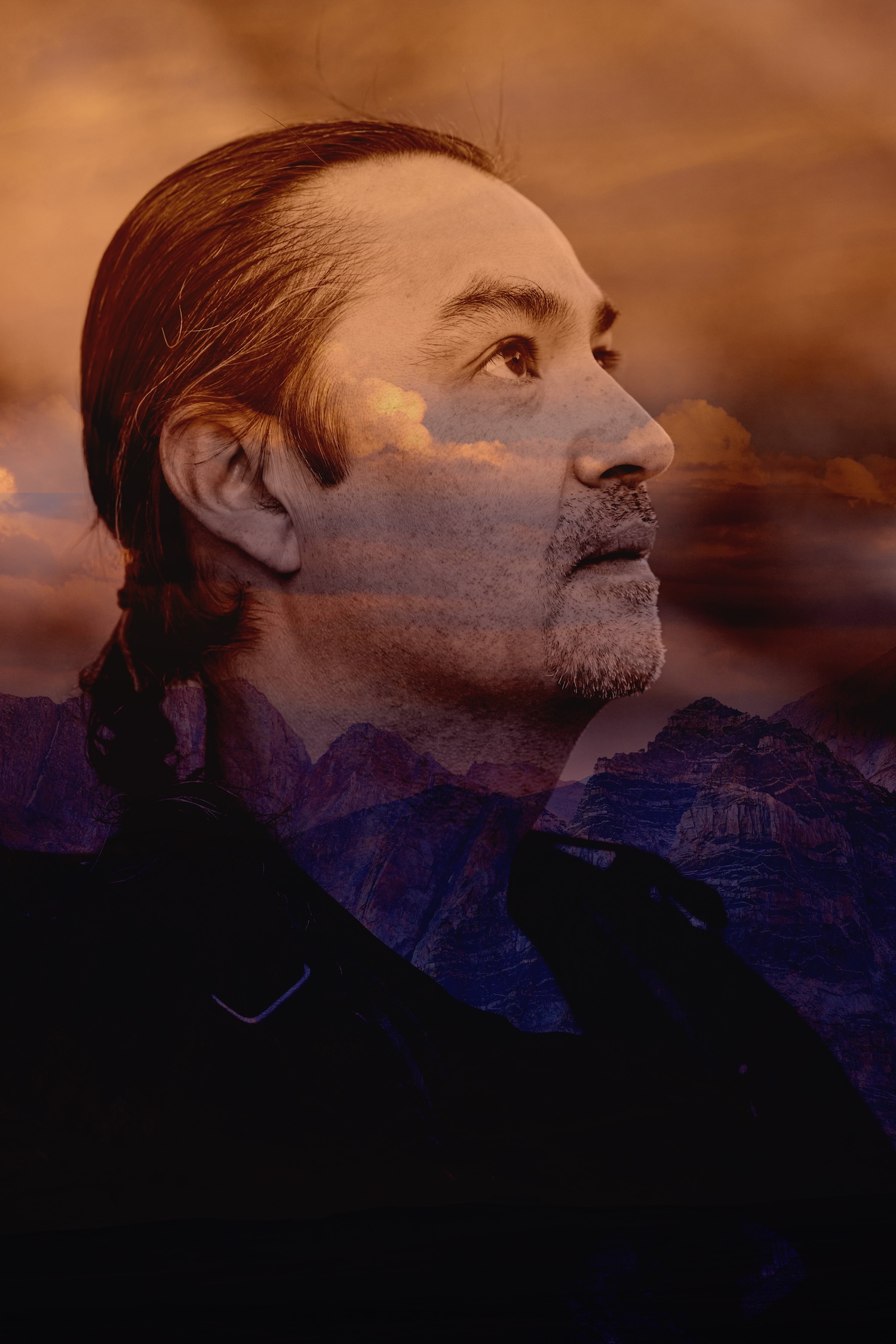
What excited you about studio photography? It’s the antithesis of raw nature.
In college, I assisted a product photographer (shout out to Butch Adams!) where I learned to love lighting portraits and products. Our property in Bishop includes a commercial office building where I keep my studio. It’s great to have a place where I can make a big mess and then leave it for the night without anyone caring.
As a yearbook photographer in High School, I learned that a camera was my ticket to freedom. With a photo assignment in my pocket, I could wander the halls, leave school early, and generally be on my program. Climbing is also known as ’the freedom of the hills’ so really it’s a perfect combo for me.

